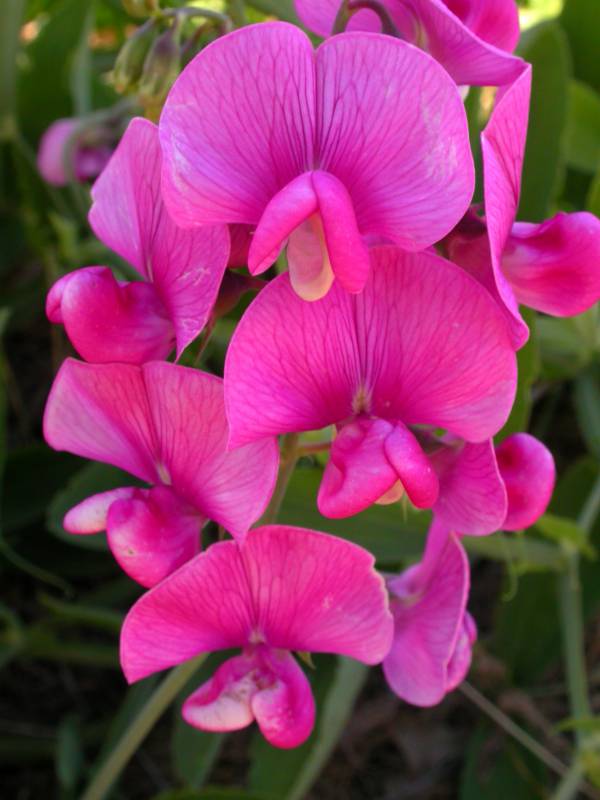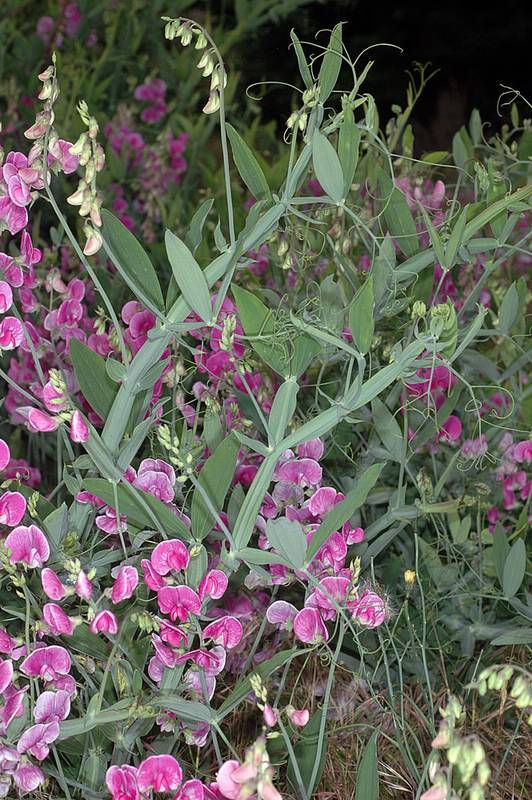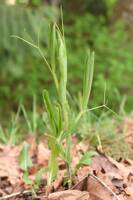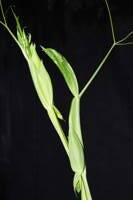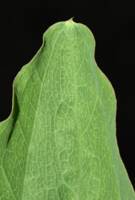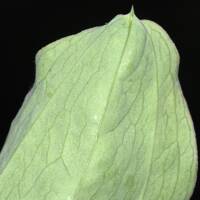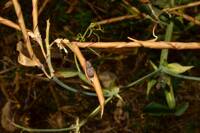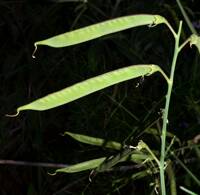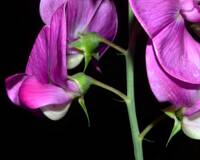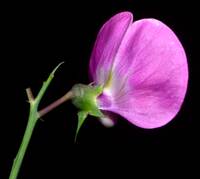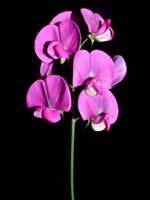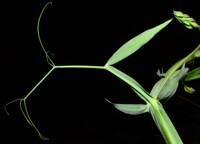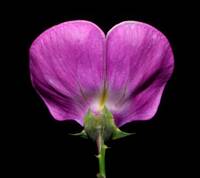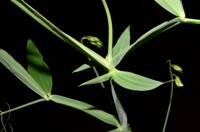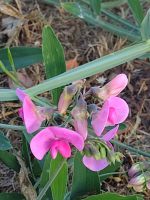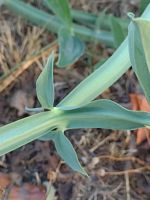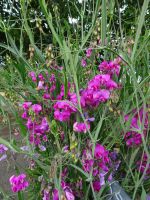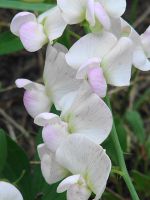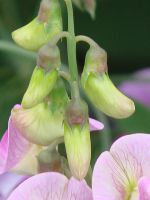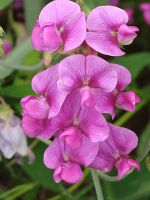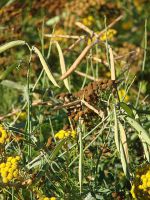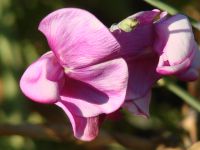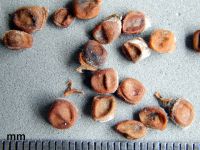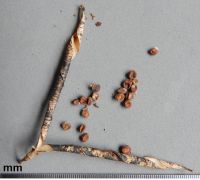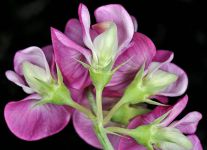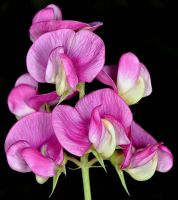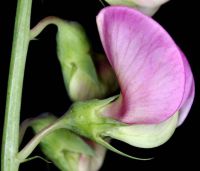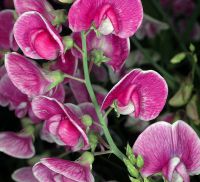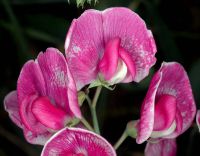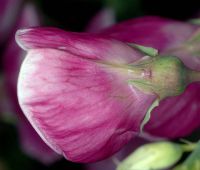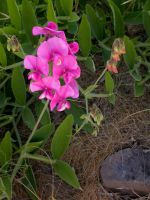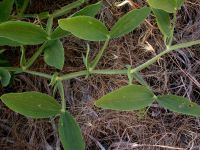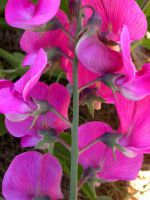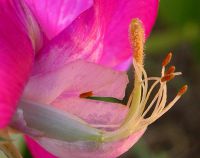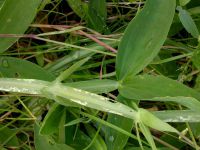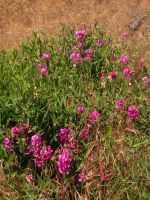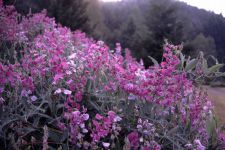Distribution: Occurring on both sides of the Cascades crest in Washington; British Columbia to California, east across North America to the Atlantic Coast.
Habitat: Roadsides, ditches, forest edge, and other disturbed areas, usually where somewhat moist.
Flowers: May-August
Origin: Introduced from Europe
Growth Duration: Perennial
Conservation Status: Not of concern
Pollination: Bumblebees, bees, butterflies
Glabrous, herbaceous perennial from rhizomes, the stems 8-20 dm. tall, very broadly winged, climbing.
Leaves pinnate but with only 2 leaflets, lance-elliptic to obovate-lanceolate, up to 14 cm. long and 5 cm. broad; stipules broadly lanceolate, 3-5 cm. long, entire, the upper lobe 2-3 times as long as the lower; tendrils well developed.
Inflorescence of racemes on long peduncles arising from the leaf axils; flowers 5-15, pink, white, red or striped, 15-20 mm. long; calyx 8-12 mm. long, the 5 linear-lanceolate teeth equal to the tube; corolla pea-like, the banner well reflexed, nearly as broad as long, short-clawed like the wings and keel.
Pod 6-10 cm. long and 7-10 mm. broad.
Publication: Sp. Pl. 2: 733. 1753. 1753.
PNW Herbaria: Specimen records of Lathyrus latifolius in the Consortium of Pacific Northwest Herbaria database
WA Flora Checklist: Lathyrus latifolius checklist entry
OregonFlora: Lathyrus latifolius information
E-Flora BC: Lathyrus latifolius atlas page
CalPhotos: Lathyrus latifolius photos

